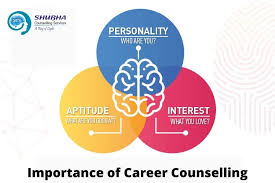Inclusive education is a fundamental principle that recognizes and celebrates the diversity of students’ backgrounds, abilities, identities, and learning needs. In secondary education, fostering inclusivity is essential for creating equitable learning environments where all students feel valued, respected, and supported to achieve their full potential. This article explores the importance of inclusivity in secondary education and provides strategies for supporting diverse learners in the classroom.
Embracing Diversity and Inclusion
1. Cultural Competence:
Culturally responsive teaching practices honor and respect students’ cultural backgrounds, identities, and experiences. Educators incorporate diverse perspectives, texts, and resources into the curriculum, fostering a sense of belonging and affirming students’ cultural identities.
2. Diverse Representation:
Inclusive classrooms reflect the diversity of society, with diverse representation in curriculum materials, classroom decor, and instructional content. Students see themselves reflected in the curriculum, promoting a sense of belonging and validating their identities.
3. Universal Design for Learning (UDL):
Universal Design for Learning (UDL) principles ensure that instruction is accessible and responsive to the diverse needs of all learners. Educators provide multiple means of representation, expression, and engagement to accommodate students’ varied learning styles, preferences, and abilities.
Supporting Students with Disabilities
1. Individualized Education Plans (IEPs):
Students with disabilities receive personalized support through Individualized Education Plans (IEPs) that outline their unique learning goals, accommodations, and services. Educators collaborate with special education teams and parents to implement IEPs and provide targeted support for students with disabilities.
2. Differentiated Instruction:
Differentiated instruction allows educators to tailor instruction to students’ individual needs, interests, and readiness levels. Teachers vary content, process, and products to accommodate diverse learners, providing scaffolding, enrichment, and support as needed.

3. Assistive Technology:
Assistive technology tools and devices support students with disabilities in accessing the curriculum, communicating, and participating in learning activities. Schools provide assistive technology assessments and training to ensure that students have access to the tools they need to succeed.
Promoting Equity and Inclusion
1. Anti-Bias Education:
Anti-bias education promotes social justice, equity, and inclusion by challenging stereotypes, prejudice, and discrimination. Educators facilitate open discussions, address bias incidents, and create a safe and supportive classroom environment where all students feel valued and respected.
2. Positive Behavior Supports:
Positive behavior supports promote a positive school climate and address challenging behaviors through proactive strategies, reinforcement, and intervention. Schools implement behavior management plans, restorative practices, and social-emotional learning programs to foster a culture of respect, empathy, and accountability.
3. Community Partnerships:
Community partnerships provide additional support and resources for diverse learners, including mentoring programs, tutoring services, and enrichment opportunities. Schools collaborate with community organizations, advocacy groups, and service providers to meet the diverse needs of students and families.
Conclusion: Building Inclusive Learning Communities
Inclusive education is a cornerstone of secondary education, fostering equity, diversity, and belonging in the classroom. By embracing diversity, providing personalized support, and promoting inclusive practices, secondary schools create learning environments where all students can thrive academically, socially, and emotionally. As educators, administrators, and stakeholders, let us continue to prioritize inclusivity in secondary education, ensuring that every student feels valued, supported, and empowered to succeed. Together, we can build inclusive learning communities where diversity is celebrated, equity is upheld, and all learners have the opportunity to reach their full potential.



